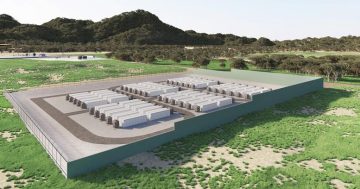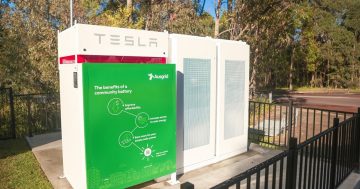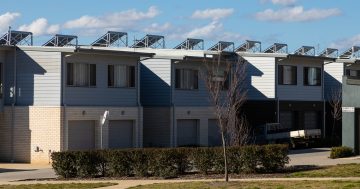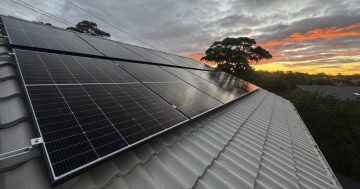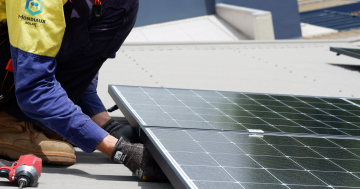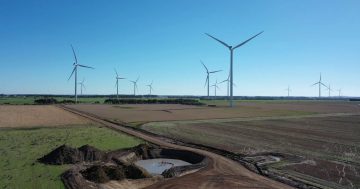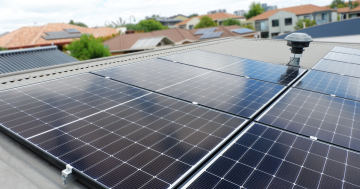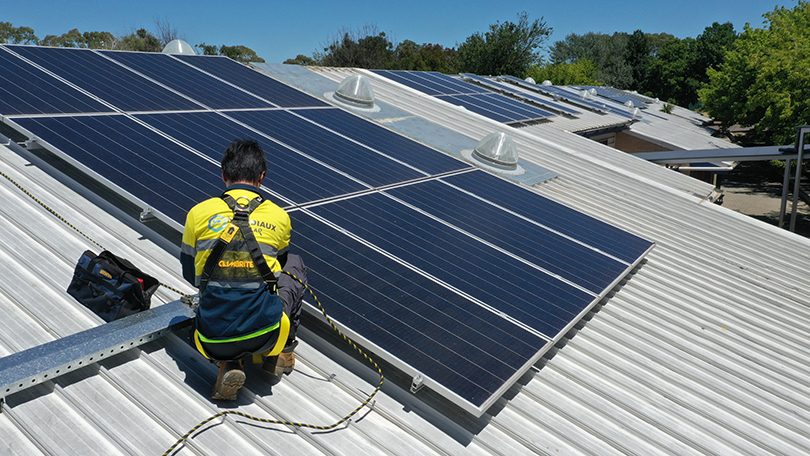
Mondiaux Solar installing solar PV systems on Monash Primary School. Photo: Supplied.
Work is underway that could lead to hundreds more ACT Government facilities becoming solar powerhouses.
Renewable energy consultant IT Power is conducting a desktop review of the solar photovoltaic (PV) and battery storage potential of Territory facilities that could lead to the installation of this technology.
It is assessing the feasibility, potential benefits and optimal size of solar PV and battery storage at 233 government facilities.
The Government wants to know how much generation space there is either on rooftops or on the ground, how much electricity could be generated at each site and what the savings and emission reductions would be.
It envisages some facilities being self-sufficient or storing excess electricity in batteries or feeding back into the grid.
The review will make recommendations on the most appropriate systems to install and how much they will cost, including financial modelling that outlines the payback period and internal rate of return for solar PV and battery storage systems.
It will provide an economic analysis for the life of a system including the inverter/battery replacement costs.
READ ALSO: Is it worth adding a battery to your home’s solar system?
Minister for Emissions Reduction, Shane Rattenbury said assessing the generating potential of government facilities was an important part of cutting greenhouse gas emissions and taking the ACT to a “clean, green energy future”.
He said the Government had already installed solar power on over 170 of its buildings with a combined solar generation capacity of more than 4500kW.
“ACT Government buildings are already powerhouses and I see the potential to increase their solar generation capacity in the future,” he said.
Mr Rattenbury said solar power was a well-tested and cost-effective way to reduce government operating costs and power bills.
“When combined with energy storage, this offers further opportunities to manage energy supply and demand to minimise costs and emissions,” he said.
Mr Rattenbury said the aim was not to make buildings completely energy self-sufficient or to disconnect from the grid.
“Adding more solar power can further reduce power bills and, in some cases, contribute clean energy to the grid. Batteries can also provide greater flexibility in responding to energy market conditions,” he said.
Mr Rattenbury said Canberra’s rooftops played a large and increasing role in the ACT’s 100 per cent renewable electricity supply with the number of solar generators increasing by more than 17 per cent during the last financial year.
“I encourage households and businesses to explore all options to save money and reduce emissions, including solar power, energy storage, efficient electric appliances and energy saving behaviours,” he said.
“Solar offers households cost benefits and flexibility options. It also means we generate more of our 100 per cent renewable energy right here in the ACT.”
The contract is worth $58,000.












